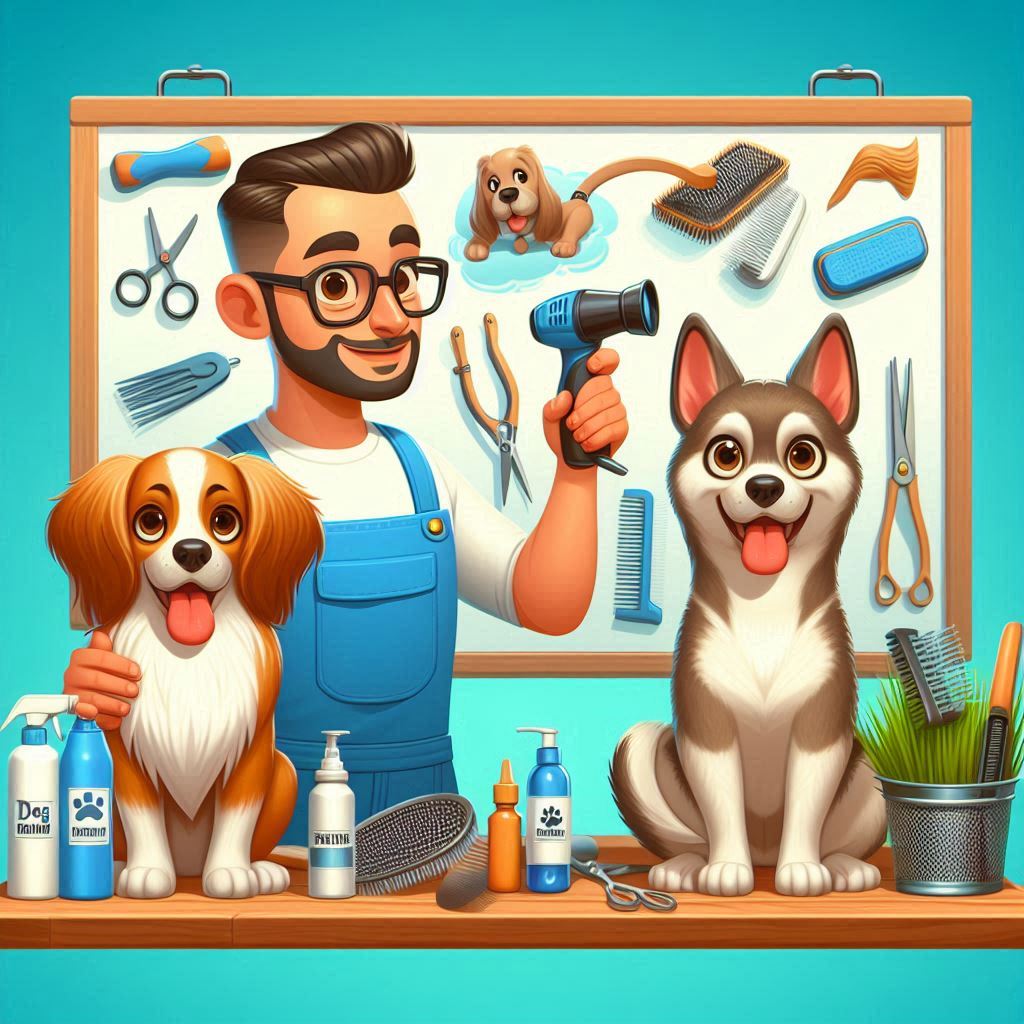Introduction
Owning a dog is a rewarding experience, but it also comes with responsibilities. One of the most crucial aspects of dog ownership is grooming and hygiene. Not only does it help your furry friend look and feel their best, but it also plays a vital role in their overall health and well-being. Let’s dive into two common pain points for dog owners: shedding and matting, and dental hygiene.
Topic 1: Grooming: Managing Shedding and Matting
Shedding and matting are two of the most frustrating grooming challenges for dog owners. These issues can be particularly troublesome for breeds with thick or long coats, such as Golden Retrievers, German Shepherds, and Huskies.
Understanding Shedding
Shedding is a natural process that helps dogs regulate their body temperature and replace old hair with new. However, excessive shedding can leave your home covered in fur. To manage shedding, consider the following tips:
Invest in the Right Tools: Dog deshedding brushes, like the Furminator, are designed to remove loose hair efficiently. Grooming gloves can also be helpful, as they gently collect hair while you pet your dog.
Regular Brushing: Consistent brushing helps to remove loose hair before it can form mats. The frequency of brushing will depend on your dog’s breed and coat type.
Diet and Supplements: A healthy diet can contribute to a healthier coat. Consider adding dog fur supplements to your dog’s diet, as they can help reduce shedding and improve coat quality.
Tackling Matting
Mats are tangled clumps of hair that can be painful and uncomfortable for your dog. Prevention is key, but if your dog already has mats, here’s how to deal with them:
Gentle Detangling: Use a dematting tool or your fingers to carefully work through the mats. Be patient and avoid pulling, as this can cause pain and discomfort.
Grooming Scissors: For stubborn mats, carefully use grooming scissors to cut them away. Be cautious to avoid cutting your dog’s skin.
Professional Grooming: If you’re struggling with severe matting, it’s best to seek help from a professional groomer.
Additional Grooming Tips
Bathing: How often you bathe your dog will depend on their lifestyle and coat type. Use a mild shampoo formulated for dogs and avoid over-bathing, as it can strip their natural oils.
Ear Cleaning: Check your dog’s ears regularly for signs of infection, such as redness, discharge, or excessive scratching. Clean their ears gently with a veterinarian-approved ear cleaner.
Nail Trimming: Keeping your dog’s nails at a manageable length is important for their comfort and mobility. Use a pet nail clipper and be careful not to cut the quick, which can cause pain.
Topic 2: Hygiene: Maintaining Good Dental Hygiene
Dental health is often overlooked in dogs, but it’s just as important as human dental care. Poor dental hygiene can lead to gum disease, tooth loss, and even systemic health problems.
Understanding Dental Problems
Common dental problems in dogs include:
Bad Breath: Bad breath is often a sign of underlying dental issues.
Gum Disease: Gum disease, also known as periodontal disease, is a common condition caused by plaque buildup.
Tooth Decay: Tooth decay, or cavities, can occur in dogs, especially those with poor dental hygiene.
Preventing Dental Problems
Regular Brushing: Brushing your dog’s teeth regularly is the best way to prevent dental problems. Use a pet-safe toothpaste and a toothbrush designed for dogs.
Dental Chews and Toys: Dental chews and toys can help to scrape away plaque and tartar. Look for products that are approved by the Veterinary Oral Health Council (VOHC).
Water Additives: Dental water additives can help to reduce plaque and tartar buildup.
Professional Cleanings: Regular professional dental cleanings by a veterinarian are essential for maintaining your dog’s oral health.
Additional Hygiene Tips
Ear Cleaning: As mentioned earlier, regular ear cleaning is crucial for preventing infections.
Eye Care: Check your dog’s eyes daily for signs of redness, discharge, or cloudiness. If you notice any abnormalities, consult your veterinarian.
Sanitation: Keep your dog’s environment clean and free of harmful substances. Wash their bedding and bowls regularly.
Conclusion
Grooming and hygiene are essential components of responsible dog ownership. By following the tips and recommendations in this article, you can help your furry friend maintain optimal health and well-being. Remember, prevention is key, so make grooming and hygiene a regular part of your dog’s routine.

